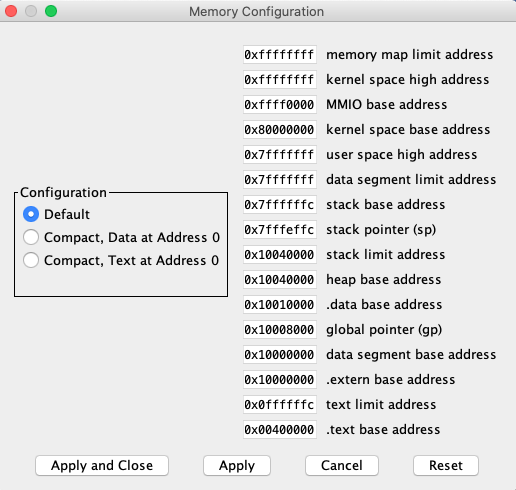Lecture 9
Virtual Memory
Lecture
Outline
- Virtual memory and physical memory
- Virtual and physical addresses
- Address translation and page table
- Translation lookaside buffer (TLB)
Workshop
Tasks
- Consider a virtual memory system that can address a total of 250 bytes.
You have unlimited hard drive space, but are limited to 2 GB of semiconductor (physical) memory.
Assume that virtual and physical pages are each 4 KB in size.
- How many bits is the physical address?
- What is the maximum number of virtual pages in the system?
- How many physical pages are in the system?
- How many bits are the virtual and physical page numbers?
- How many page table entries will the page table contain?
TODO
Examples:
Homework
- Programming task “PseudoVM”.
Write an exception handler that imitates “virtual memory” for “forbidden” addresses.
A “forbidden” address is any address that causes exceptions
LOAD_ACCESS_FAULT and STORE_ACCESS_FAULT when we try to access it (read or write).
This is not supported for address 0x0 (it is reserved).

It is suggested to create a table (array) that will store records
"virtual address":value (pairs of 4-byte values).
The capacity of the table is 16 records (i.e. 2*4*16=128 bytes).
Address 0x0 can be used to specify an empty record.
“Virtual memory” works only with instructions lw and sw
that use register t0 as a source/destination for values
(other registers are not checked).
Reading from an address works in the following way:
- If the address is present in the table, the value stored in the table is returned.
- If the address is missing from the table,
0is returned.
Writing to an address works in the following way:
- If the address is present in the table, the value stored in the record is updated.
- If the address is missing from the table, but the table has free records,
a new record
"virtual address":valueis placed into the table. - If the address is missing from the table and its full (no free records), nothing happens.
Notes:
- Everything is done in the handler (starts with the
handlerlabel) that handles the two exceptions. - The handler must save and restore all registers it uses (some area in the
.datasection). - This main program will be merged with the handler (you must submit only the handler).
- The main program reads addresses from user input:
address divisible by
4are used for reading, others - for writing. - Examples of an input and output for the program are below.
Input:
21
123
22
1234
20
1001
100500
1000
100
-70001
-70001
-70000
-70004
0
Output:
1234
100500
0
0
-70001
References
- Virtual Memory. Section 8.4 in [DDCA].
- Large and Fast: Exploiting Memory Hierarchy. Chapter 5 in [CODR].
- Ulrich Drepper. What Every Programmer Should Know About Memory.
- Translation lookaside buffer (Wikipedia).